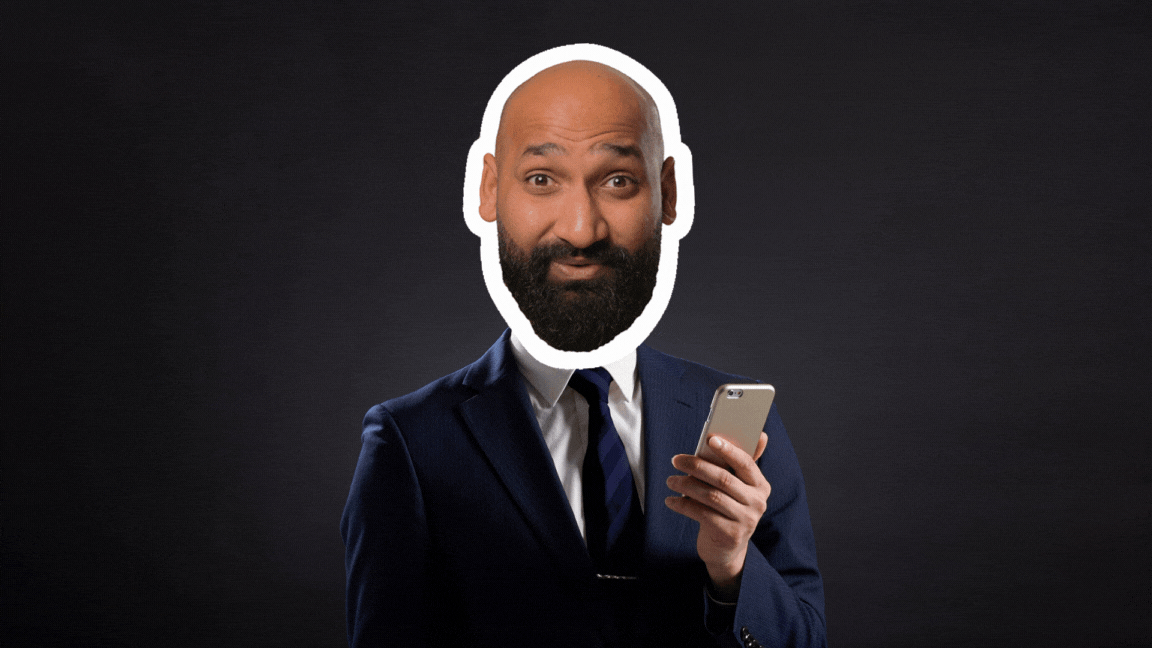Have you ever thought of writing a book? Of course, I’m not talking about a novel, a biography, or a collection of children's stories. We are here to discuss personal branding, and so in the particular niche only, I’m going to ask again, have you ever thought about writing a book, a book on personal branding? If you are nodding your head in a yes, let me tell you, you have reached the right blog for knowledge and guidance.
Let me tell you, the main reason we have written this blog is that we have crafted a new personal branding ebook called “Become Someone From No One.” This ebook, 178 Powerhouse, is written by Bhavik Sarkhedi and Sahil Gandhi, also known as “Brand Professor.” Together they own a Webflow agency, Blushush, based in London, UK. Together we have solved many client branding problems and collaborated with many brands worldwide.
Today, personal branding has become a backbone for businesses to become successful in the market. We are living in the age where visibility and authenticity can set you apart in all this cutthroat competitive ecosystem. Writing a book is one of the most powerful ways to establish yourself as an authority, connect with your audience, and build a lasting personal brand. But again, it’s not as easy as it sounds; people have to go through a lot to make sure they have placed their book in the market with the right description and within the reach of their target audience. This thought provoked us to come up with a practical guide that will help personal branding professionals to write a book with zero to negligible costs and still make a significant branding impact.
Writing a new book has never been an easy task. You have to be agile on many such points that are included in the branding and marketing point of view. The costs associated with traditional publishing, editing, design, and marketing can be daunting. We know how it feels to get stuck with so many costs when you are just aligned with the This guide outlines a proven, cost-free personal branding book plan that leverages existing tools, platforms, and strategies to produce a high-quality book, drawing on real-world examples, expert advice from best personal branding books, and actionable steps backed by statistics.
Why a Book Boosts Your Personal Brand
Before we dive into the process of creating a personal branding book plan that will work for you, let us first understand how a book can actually boost your personal brand. The number one thing you have to understand is that a book is a tangible asset that signals expertise and credibility. According to a 2023 survey by Statista, 74% of consumers view authors as thought leaders in their field. Publishing a book can amplify your visibility, with 19% of purchases driven by word-of-mouth recommendations, as noted in a study by Nielsen.
Unlike blog posts or social media content, a book offers a permanent, shareable touchpoint that can lead to speaking engagements, consulting opportunities, and a loyal audience. For example, Tim Ferriss’s The 4-Hour Workweek completely shifts his personal brand by blending personal anecdotes with actionable advice, leading to millions of copies sold and a global platform. This plan will show you how to replicate such success without spending a dime.
Step 1: Define Your Brand and Book Topic
The first step of writing a book is not writing. Yes, you read that right.
Before you write the book, you must define your brand and book topic. The foundation of a successful personal branding book is a clear alignment between your expertise and your audience’s needs. In Reinventing You by Dorie Clark, the author emphasizes identifying your unique strengths to craft a compelling narrative.
Start by asking: What problem can I solve for my audience?
What knowledge or experience makes me stand out?
This step ensures your book runs parallel with everything. According to Vivendi’s 2023 report, 77% of consumers are more loyal to brands that share their values.
Step 2: Structure Your Book for Simplicity and Impact
This is personal advice from us. Complex books are hard to write and harder to sell. So, what do you do? You don’t structure your book in a complicated way; the framework should be simple and impactful. At the same time, think about your readers; your readers should have an easy reading experience. No one wants to get stuck in the book or feel that they have to put a lot of effort and energy into interpreting the book. To give you an orthodox example, structured titles like “7 Keys to Success” or “10 Tips for Growth” organize content efficiently. A structured format reduces writing time and appeals to readers seeking actionable insights.
Step 3: Write Using Free Tools and Existing Content
When working on personal branding for beginners. Remember the objective; if you had the money and the resources to spend and invest in your book, we wouldn't be having this conversation. For that matter, you wouldn't be reading this blog in the first place.
So what do you do instead?
You take advantage of the internet. There are so many free tools and online platforms that can help you make your books.
Writing a book from scratch can feel overwhelming, but you can repurpose existing content to save time. Here are a few simple tips:
- Use Google Docs for drafting, as it’s free, cloud-based, and offers real-time collaboration.
- To finish 3,000 words per chapter, write 250 to 300 words per page, a standard estimate for 12-point font, single-spaced manuscripts.
- Aim for 10 to 12 pages per chapter, writing consistently over 30 to 60 days to complete a draft.
Now, again, we know that this is where you will need to build consistency, but before you pursue consistency, focus on building discipline. The consistency will follow automatically.
Step 4: Edit for Free
We all can agree that editing is often the most expensive part of book production. There are professional editors charging $1,000 to $5,000 for it. But again, we always encourage people to use online free tools to make sure you are not paying a dime to anyone for most of the book-creating process.
You do not have to follow the herd and go after an editor. It’s your book, and nobody knows it better than you. Just make sure you are well aligned with grammar, good formatting, and eye-pleasing content structure. Focus on the content, tone, and voice of your personal brand.
Step 5: Design a Professional Cover for Free
Yes, a good professional book cover can really be a selling point.
We all have heard how people say that you shouldn’t judge a book by its cover. But nobody actually thinks that this idiom is popular because as humans we all have a natural tendency to do so. We all judge a book by its cover. In fact, 80% of consumers judge books by their covers, according to a 2022 survey by BookBub. So if that’s the case, then why don’t we take advantage of it and design the best possible cover for the book that stands out and becomes an attraction point for your audience and readers? Professional cover design can cost anywhere between $500 and $2,000.
But you can very well ignore it and use Canva, for example, to design a good cover for your book. The best part is it's easy; you do not have to learn about editing and design with it, and it's a free online tool. I would also advise you to test your cover with your network on social media platforms like Instagram, X, or LinkedIn for personal brand magnet to ensure it is something well adored and liked by your audience.
Avoid common pitfalls.
Writing a book is only half the battle; avoiding mistakes is equally critical. My go-to advice would be on language. Ensure your book’s tone aligns with your audience; avoid overly casual language, especially when you are targeting professionals. Learn why brand strategy is essential and maintain consistency across your brand’s visuals and messaging.
Keep the book simple; I understand you think that you must offer maximum value. But you have to ensure that the book doesn’t get lengthy enough so that people avoid it just by looking at its size. Trust me, there are people who also judge books by their size and number of pages.
Lasting thoughts
I guess we have covered all the points on how to build personal brand for free. I know you must be thinking that we skipped a lot of steps. No, we didn’t. We will cover them here, because they are simple and you can always do it by yourself. And of course, we always think of our readers as wise people. We do not want to spoon-feed everything to you. The remaining steps are to get your book formatted at no cost; this again can be done using different online tools and platforms. Then you can look to publish your personal branding book for free on Amazon KDP.
If you are planning to market your book, here’s a good tip. Marketing is where most authors falter, but a free book requires a robust, cost-free personal branding book strategy. In This Is Marketing, author Seth Godin emphasizes empathy-driven content to connect with audiences. Know this:since you are working with zero funds and operating with negligible utilities and resources, this book publishing may not look like a very rich and conventional experience.But again, remember the blog title.
At last, we would encourage you to download the Personal Branding Gold Mine eBook crafted by Sahil Gandhi and also Bhavik Sarkhedi and let us know how you liked our new personal branding eBook, and please share your feedback along with how this blog helped you in writing your personal branding book.



